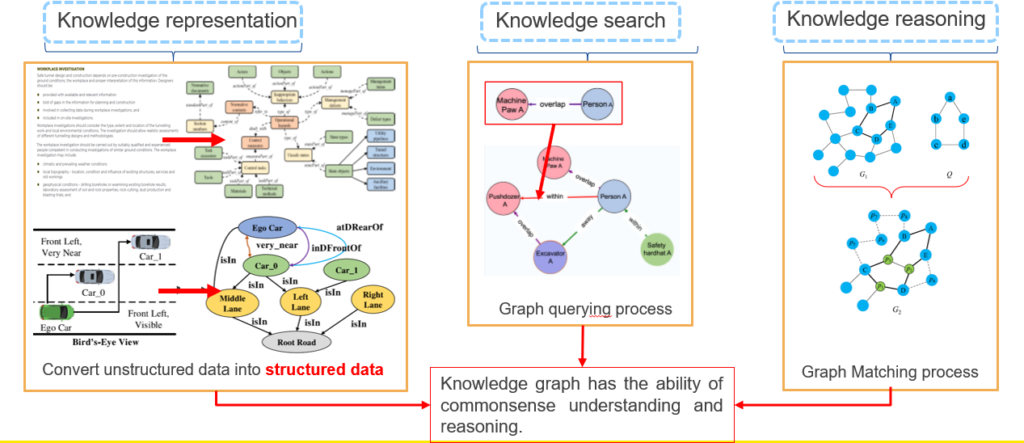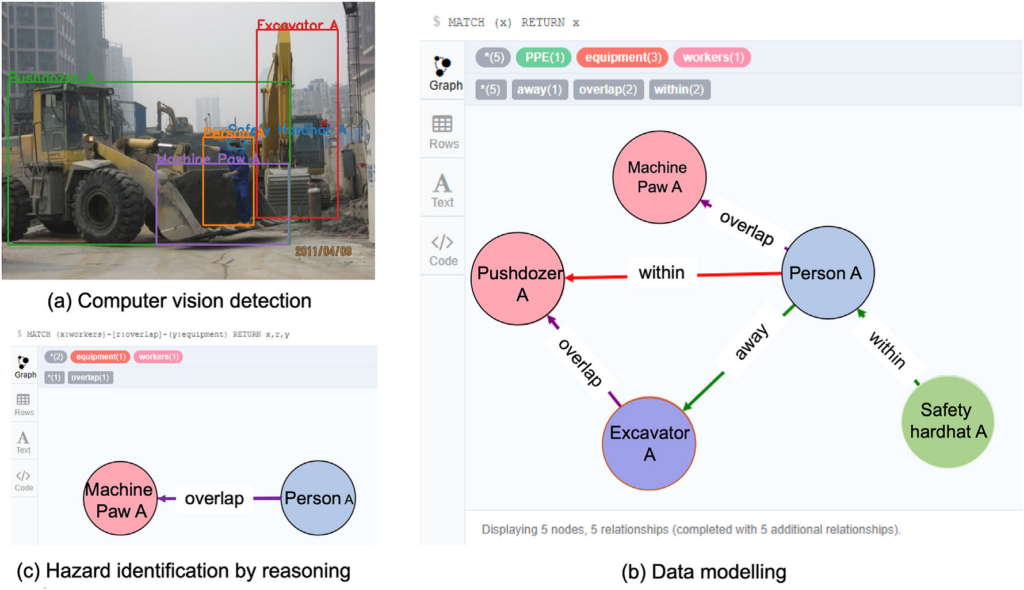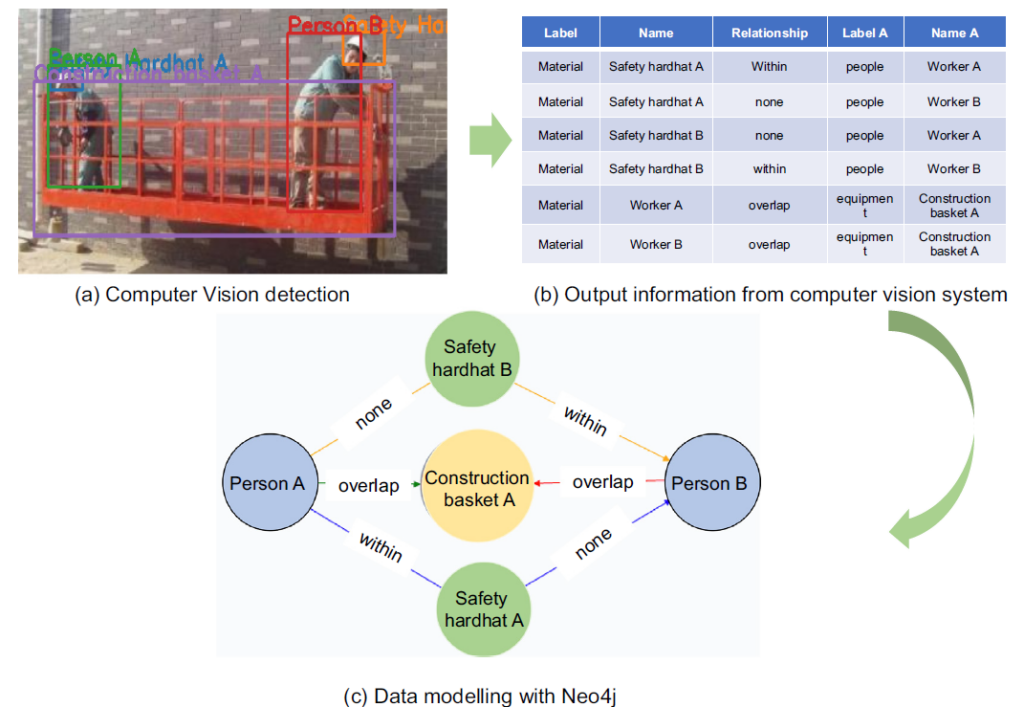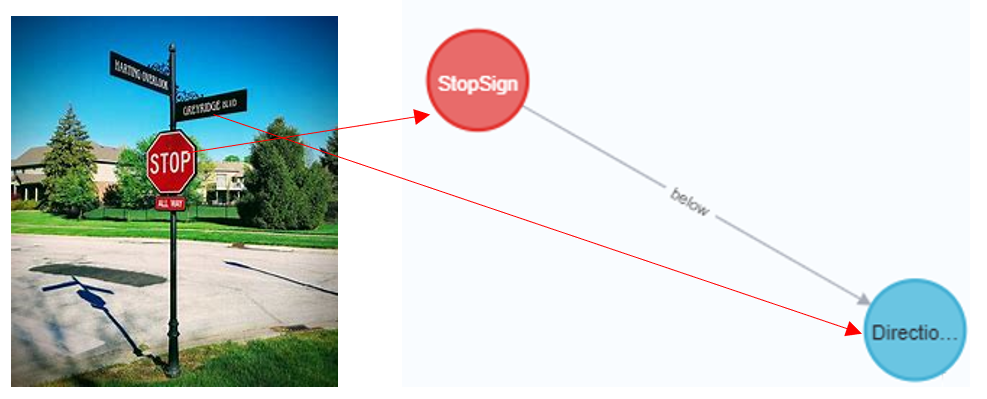Knowledge Graph
Employing Knowledge Graph can empower Intelligent Decision Making within Construction Safety and Infrastructure Asset Management, leading to enhanced efficiency and safety.
What is Knowledge Graph?
Knowledge graph is a structured representation of knowledge that incorporates information about entities and the relationships between them. It usually used to model and represent complex relationships and information in a way that is easily traversable and understandable. Knowledge graph example including search engines, recommendation systems, natural language processing, and semantic web technologies.


What are industry applications of Knowledge Graphs?
Knowledge graphs system have the potential to bring significant benefits to the construction industry and infrastructure asset management. They can enable industry professionals to make intelligent decisions related to safety protocols and infrastructure asset management. This approach enhances collaboration, improves risk assessment, and supports proactive maintenance strategies, ultimately contributing to safer construction practices and optimized infrastructure performance.


Existing Application Cases of Knowledge Graphs
Safety Inspection and Compliance Checking of Construction Sites
By integrating safety regulations, construction codes, and site data into a connected web of information, we can automate the identification of compliance with safety standards and provide real-time insights to improve decision-making.
This data-driven approach can significantly enhance the safety and efficiency of construction projects, leading to fewer accidents and injuries, reduced costs, and a more sustainable construction industry.
New Research Cases on Compliance Checking of Traffic Signs
The traffic management department has clear requirements for the placement and direction of road traffic facilities and summarizes the requirements in the form of regulatory texts. Violating relevant specifications can result in safety and economic losses. The traditional method relies on the experience and knowledge of experts for judgment. Meanwhile, this project aims to develop an automatic judgment system to improve efficiency and accuracy.

System architecture diagram:
System tasks include front-end collection and back-end decision-making. The scene image generation algorithm converts on-site images into machine understood image formats and transmits them to the backend.
The query function based on knowledge graph development can preliminarily determine compliance by comparing the scene graph with the knowledge database.